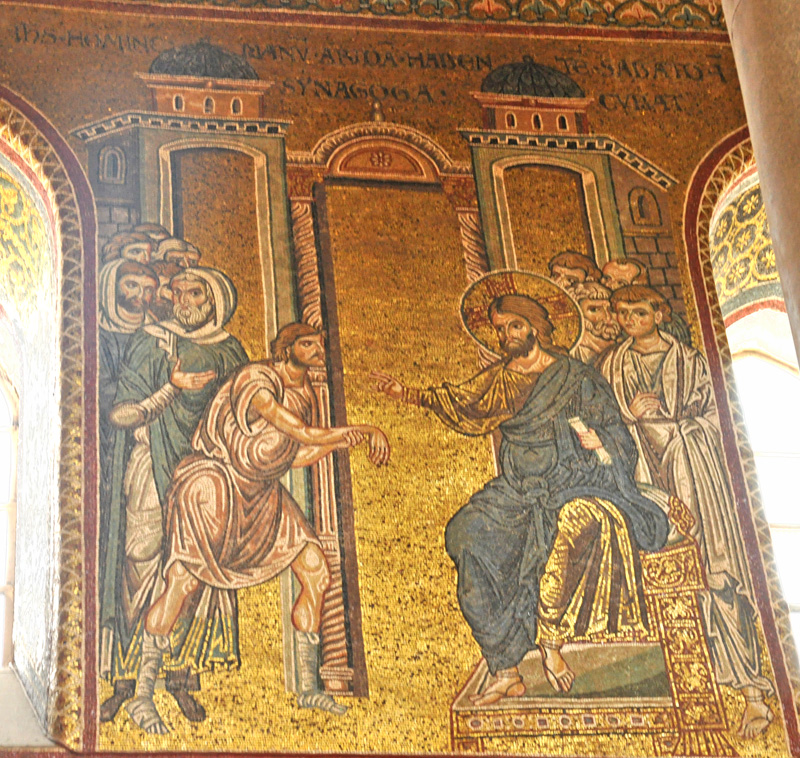The Man with the Withered Hand

12th-13th century
Mosaic
Monreale Cathedral
In Matthew 12:9-14 Jesus heals a man with a withered hand on the Sabbath (c.f. Mark 3:1-6 and Luke 6:6-11). The narrative has Jesus inside a synagogue but the artist places him outside and on a throne, the better to reflect his assertions of authority. ("I tell you that there is here a greater than the temple…for the Son of man is Lord even of the sabbath," 6:6-8.) The scroll in his left hand also reflects this authority as well as the mastery of the scriptures that he shows in his citations from 1 Samuel 21:2-7 and Hosea 6:6. Even his right hand expresses his authority, formed as was common in the West with the index and middle fingers joined to signify his two natures and the three others bent together as a sign of the Trinity.
Another important theme in the gospels is the angry reaction of the Jewish leaders to these assertions of authority and to his curing on the Sabbath. This is the point of the figures gathered on the left, the first of whom gestures angrily at the central action.
The figures on the right are of course the disciples. Peter is the one with the curly hair and squarish beard, John probably the young man in front without a beard.
The Latin inscription above the scene is IHESUS HOMINEM MANUM ARIDAM HABENTEM SABATO IN SYNAGOGA CURAT, "Jesus cures the man with the the dry hand in a synagogue on the Sabbath."
The clothing of the man with the hand suggests his needy condition. He wears only a belted tunic and cloth wrappings on his feet, whereas the Jewish leader behind him has sandals, leggings, a robe, a tunic, a mantle and a separate hood.
View this image in full resolution.
Read more about the man with the withered hand.
Photographed at the cathedral by Richard Stracke, shared under Attribution-NonCommercial-ShareAlike license.